Surround Music Rules!
There is simply no better way to dramatically enhance music listening experiences than to switch from traditional stereo to immersive surround sound. “No question, it’s better,” encourages Paul MacGowan, head of PS Audio in one of his recent YT videos. As audiophiles, we’re obligated to chase the mythical “absolute sound.” Many gladly open their wallets and spend beyond ridiculous amounts of money on exotic audio hardware and accessories that contribute nothing to bettering the fidelity of your system. If they matter, the improvements are marginal at best. But adding surround music playback to your system — in fact, you may already be properly equipped with your home theater system — is guaranteed to elevate your listening and impress your friends and family.
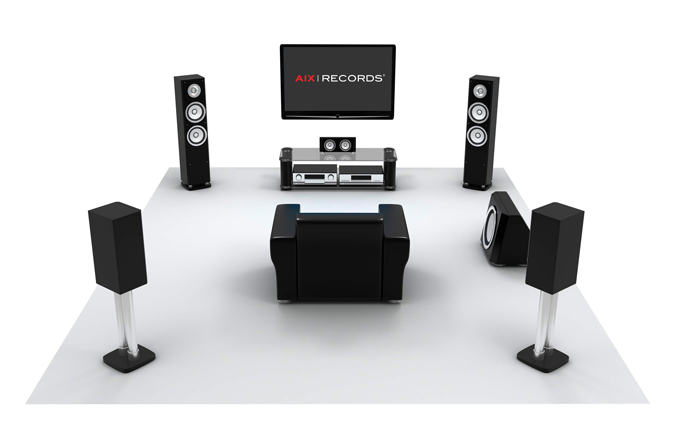
Most audiophiles and audiophile companies insist that a proper HiFi stereo system can deliver “you-are-there” realism with low level sonic details, wide soundstages, and microdynamics (please note these are audiophile reviewers descriptors NOT mine). All it takes is a pair of reasonably good speakers or a nice pair of headphones to maximize music enjoyment from vinyl LPs, CDs, downloaded files, or high-quality music streamers. That is until you’ve heard surround music done right. To my great surprise, Paul MacGowan is a strong supporter of surround music.
I’ve written previously that my friend Paul misses the target as many times as he hits it in his commentaries. But he remains popular as an “expert” in the field. For example, he was off the mark when he said, “Oh God yeah!” when asked whether hi-res audio is audibly better than standard res formats like CDs and vinyl LPs. It’s not (check it out for yourself by participating in the HD-Audio Challenge II). You can read the article at Find an Expert, Lose the Sales Pitch! But when I watched his 5-minute response to a question from Bernie in Tel Aviv, Israel asking why audiophiles and audio companies place so much emphasis on stereo, Paul got it exactly right — at least initially.
I was so thrilled at his advocacy for surround music — something I’ve been doing for over 20 years — that I transcribed the entire video. Here is what he said:
Bernie: What’s wrong with — or at least not as good as — a surround sound setup? I’ve watched a few of your videos and it seems to me that your overriding goal is to provide an audio solution that gives the listener the sense of being there.
Paul: That’s true.
Bernie: Of hearing the music as though it is being played live right in front of you.
Paul: Yes, that is exactly the experience that we’re looking for and want to bring into your house. You got it.
MW NOTE: Creating a sense that the musicians are playing live “right in front of you” IS NOT the experience that most commercial rock/pop albums seek to deliver. Artists, producers, and engineers are looking to engage you as a listener with compelling tracks, interesting lyrics, catchy beats, musical “hooks”, and new sounds. Maybe some jazz and classical albums could be considered music documentaries, but the music industry is interested in hits not bringing “live” performances into your living room.
Bernie: There is talk of depth, of soundstage, and the ability to discern the location of a specific instrument.
Paul: Yes!
Bernie: So, wouldn’t a decent surround system create the immersion illusion in a way better than a stereo setup cannot? I’m only recently getting back into the audio and video lifestyle and so please forgive my naiveté and lack of knowledge.
Paul: Look, there’s no question that a properly done, full immersion surround system gives an amazing “you are there” image, if it was recorded properly. I go upstairs to our Octave Studios where Gus Skinas has one of the coolest 5-channel systems on the planet. And he has original recordings, Joni Mitchell. Uh, I mean…if you’re ever here ask him to play the Joni Mitchell piece in, with the London Philharmonic Orchestra in full surround. Oh my God, it brings…I don’t know if I’ve ever seen a dry eye listening to that.
And then when you go to two-channel, it’s like “meh.” Yeah, I get it. Nothing like the surround because it’s beautifully done and it’s set up in a room perfectly. And yeah, It’s stunning. And anywhere you walk around in the room, it’s sound like you’re there in the auditorium and the London Philharmonic is playing. It’s an amazing experience.
So why do we even bother with two-channel?
Well first off, we’re a two-channel audio company. We certainly love surround sound but there are very few decent recordings. And I’m talking a handful of decent recordings of surround stuff. Two hundred, two thousand, I don’t know. Whatever it is, they are far and few between. Most surround stuff is done for film and “eh” it’s ok. It’s processed. It’s just…
MW NOTE: Whoa! Wait a minute! Don’t we expect audio manufacturers and publishers — our “experts” — to join us in the quest for the “absolute sound?” Maybe the continuing evolution of recorded music demands that we move from simple two-channel stereo to fully immersive multichannel reproduction. I was cheering Paul on until he threw surround music under the bus — because PS Audio is a “two-channel” company? By acknowledging that surround music is superior and refusing to lead his company in that direction, he’s copping out. As I heard many times in meetings of the CEA/CTA Audio Board, “commerce comes first.” It’s all about profit not fidelity.
Paul: Look, if I could wave my magic wand, everybody on this planet, including me, would have a five-channel surround system in their homes and all recordings would be properly done with surround sound. No question it’s better.
From a practical standpoint, there are very few decent recordings, fewer, even fewer being made — certainly just for music —again they’re done for film. We have a hard enough time convincing people to put two speakers in their homes. Most people want to put up a pair of wall speakers or “I don’t want to see.” So, they bury them behind plants and they dress them up as picture frames, and, and now you want us to add five channels and turn your living room into a theater? Naw, it’s just…you know it’s a great pipe dream. You’re absolutely right. But right now, it’s just ain’t gonna to happen. It’s too impractical, too few products to listen to, to play — and it’s kinda sad, ‘cause we’ve had that technology for a while. Anyway, I’m not going to lament about it. But that’s why.
MW NOTE: “There are very few decent recordings?” Again, not true. Are there as many surround music titles as stereo tracks? No. But at the dawn of stereo recording and the microgroove stereo vinyl LP, were there more mono than stereo records? Absolutely. And that didn’t discourage manufacturers, artists, producers, and engineers from embracing a clearly superior format. It takes time. Some choose to sit back and wait to see where the trends take them and others set the trends.
There are well over 10,000 amazing surround music albums in just about any genre you prefer — many more than a handful. There are producers and engineers creating surround music in studios around the world. My good friend and Grammy-winning producer/engineer Robert Margouleff (Stevie Wonder) is all over immersive surround music and he’s nearly 80 years old! Bob Clearmountain, another superstar engineer and mixer, works out of his personal studio in my neighborhood. Every project that he mixes includes a 5.1 surround version as well as the standard stereo mix. Surround music albums are increasing in popularity. It’s not a niche thing anymore.
Paul’s seems unaware of recent technologies that can reproduce multichannel audio through headphones and even sound bars. Smyth Research makes binaural processors — the A8 and A16 — that can convincingly recreate the sound of a surround system in headphones. And they include head tracking for added effect. Equipping your room with 5 speakers and a subwoofer is not longer a requirement. Although, 75% of households in this country have a 5.1 home theater. That means tens of millions of music lovers could listen to surround music right now!
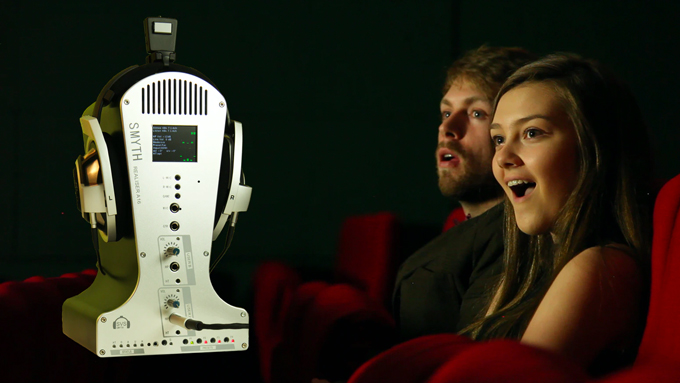
Paul: So, if you want, what Bernie’s talking about, this “in the moment” experience — what you give up with a two channel audio system, as we can help you get, it, it, it sounds, it sounds like you’re in the room. But here’s the difference. The room is more like a stage, the people, the band, is behind the speakers and they’re there in the space as opposed to all around you. Ok, that’s doesn’t happen with two-channel. I close my eyes and I can envision a band playing in front of me. Oh, God yeah. And I can do that and so people, you know, that aren’t going to get upset about what they see in their living rooms and we can do all that. But surround, “neh,” nope, we just don’t go there for all those reasons.
MW NOTE: Paul’s reasons are flawed. It takes time, money, and resources to push the envelope. Innovation is risky. Electric cars — like the one in my driveway — were once a pipe dream too. Now look around. Here in California, there seem to be more Teslas than Mercedes. It’s time to change the way audio is delivered. Surround music is the future — and its here now.
Free 5.1 Surround Music Files
A few weeks ago, I announced the availability of the iTrax-Sprint AIX Records sampler at the relaunched iTrax.com download site. The response has been overwhelming — almost 1000 readers have take advantage of the FREE offer. Initially, I viewed the sampler as an introduction to the repertoire available on the AIX Records label. Given Paul’s video and my own advocacy of surround music, I went to work pulling out the “stage” and “audience” 5.1 surround mixes out of the individual albums and created downloadable samplers in both surround POVs and in FLAC and WAV formats. Those downloads are available at the iTrax.com site. And for a limited time they are free, too. Enjoy them. Let me know if you agree with my assessment of surround vs. stereo. The files are very large because they are 96 kHz/24-bits. It’s going to take some serious bandwidth to get them downloaded to your local machine. I think the Amazon S3 cloud is behaving better these days. However, it you have difficulty getting the files, please let me know.
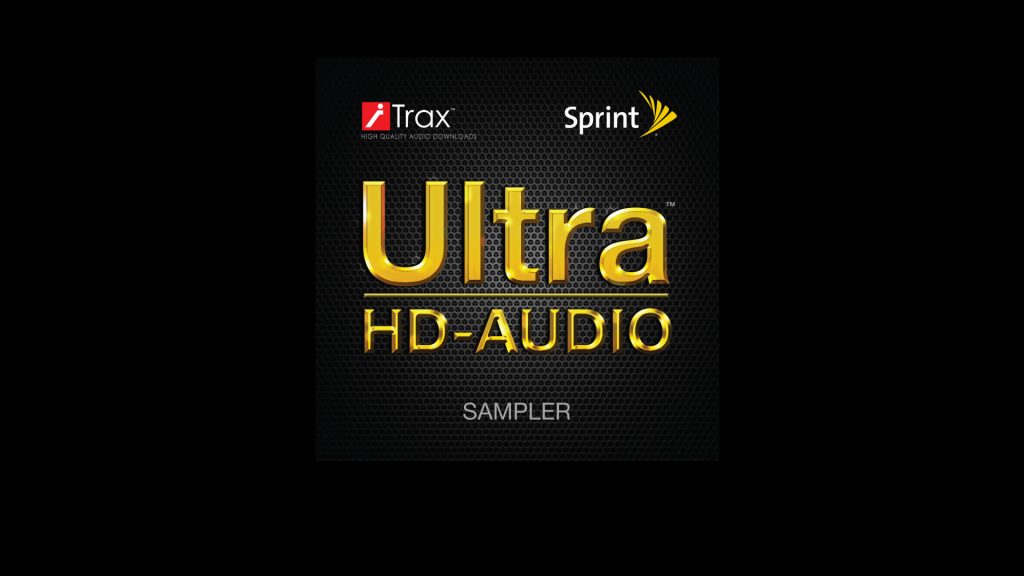
AIX Records 2017 HD-Audio Sampler
The best way to experience the unique AIX Records catalog is to purchase a copy our most recent (and probably last) Blu-ray sampler — the Ultra HD-Audio 2017 disc. It contains 2-3 minutes portions of over 70 tracks from AIX Records. Unlike the FREE iTrax-Sprint Sampler discussed above, the disc has video of the performances and the three different mixes — “stage,” “audience,” and stereo. Using the Audio Button on your remote makes it easy to switch between them and compare. For a limited time, the Ultra HD-Audio is on SALE for $14.99 — $10 off the usual price. The disc contains tracks from almost every AIX album and last over 3 hours!
30% OFF on the AIX Records Catalog and Music and Audio Book and Demo Disc!
The 30% coupon is still active and will remain so for the rest of the month. If you hear something on the iTrax-Sprint AIX Records Sampler, now is the best time to purchase a disc or download.
I encourage you to support the artists on the AIX label by buying a disc or music download from iTrax.com. I have extended the AIX30Percent coupon until the first of July.
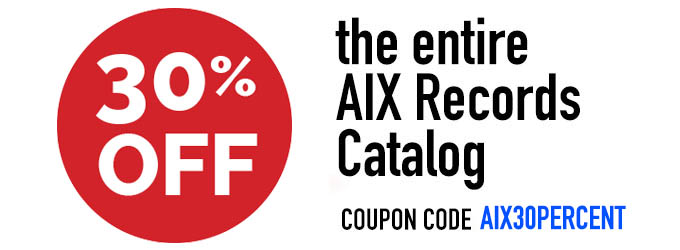
In addition, I’m discounting paperback copies of my book Music and Audio: A User Guide To Better Sound by 30% for the same duration. Use the coupon code MAAG30Percent during checkout. Note that this applies only to the paperback version. But anyone that purchases the paperback will get the eBook in PDF format as well.
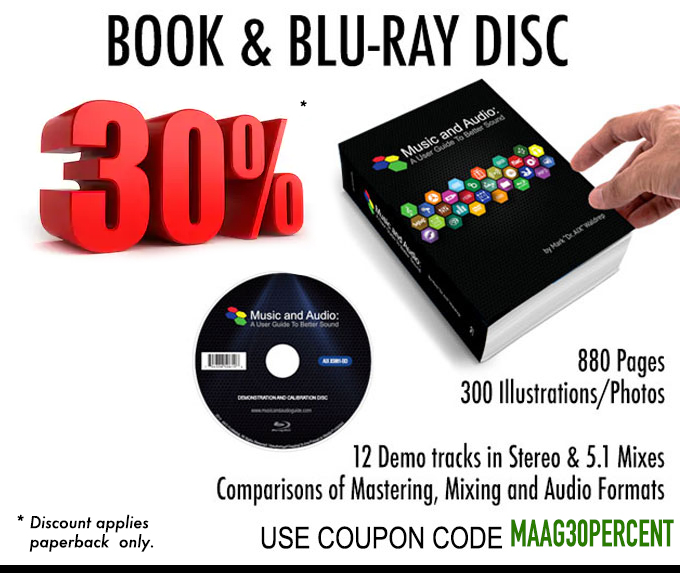

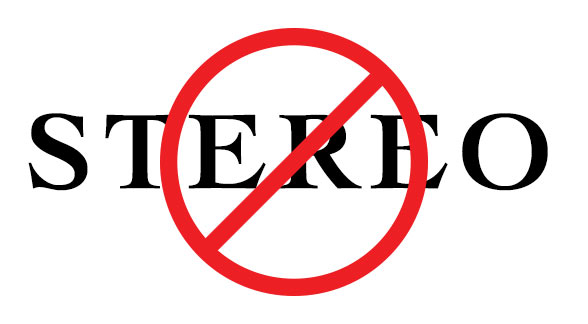
“you are there” cannot be produced by 2 speakers. The best it can do is produce “ They are here” realism for two or three instruments at best. For realistic “ You are there” experience you need to generate the ambiance of the venue or a similar venue coming from as many direction as possible. Even for ordinary 2.0 or 5.1 I still use additional 30 speakers utilizing real concert hall impulse response to generate the ambiance for “You are there” realism.
Ralph is a pioneer in this concept utilizing crosstalk cancellation and virtual concert hall.
https://www.facebook.com/groups/230176347029408/permalink/2628763037170715/
Thanks for the comments. Stereo was a tremendous improvement over mono just as surround enhances the experience over stereo. How you achieve immersive surround sound is another topic. Ralph’s Ambiosonics is one approach so capturing a “sonic documentary” but one that is too hollow and distant for my tastes. I just wrote an article for Audiophile Review about production techniques. Not sure if it’s published yet…but it should be soon.
No doubt multichannel/surround music is here and here to stay.
I wonder what Paul would say to the upcoming Dolby Atmos releases (for time being available via Tidal).
Will he still hide behind his ‘two-channel-company’ argument?
Greetings
Flemming
I was gobsmacked by his admission. Until now he has tended to stick to the “multichannel/surround is purely for home theatre” mantra. When I got into 5.1 around fifteen years ago it quickly became apparent that the only way to play multichannel music was by using ‘home cinema’ equipment. You can’t buy five speakers all the same – they tend to be sold in pairs for obvious reasons so you default to the horizontal middle front for the centre channel but in my experience it sounds ‘boxy’ and I was glad when I managed to track down a single identical that makes a hell of a difference. I detest the snobbery around two channel audio looking down at multichannel likes it’s some horrible cheap gimmick. Even if no-one makes any more decent 5.1 recordings there are enough out there on disc or download to justify setting up a system to play it and it doesn’t need to cost silly money at all – oh and still plays stereo just fine to boot.
This comment will be heresy, but I have to say that even “fake” 5.1 (e.g., the “auto surround” setting I use on my cheap Pioneer HT receiver) sounds better than 2-channel stereo. It may not be “pure” but it’s certainly immersive, so from my experience the relative paucity of true recorded-in-5.1 music should not be a barrier to trying 5.1.
So readers don’t think I’m a complete Philistine, I will add that I have a good 2-channel system and I am also an EE (though I don’t really believe in arguments from authority, except when they’re from me :).
Mark, I wonder what your thoughts are on fake/processed 5.1? I see it as a viable pathway to get people to adopt 5.1 now (and then eventually the recordings will follow). In any case, for rock/pop it’s all processed anyway; it’s not like you’re trying to reproduce the acoustics of a concert hall.
Mark, thank you for the free tracks — one can never get enough surround material.
Ironically PS Audio just started a record label whose first issue is in surround sound.
https://www.psaudio.com/products/out-of-thin-air/
Over the last decade or two I’ve steadily lost any confidence in the so-called audiophile press, whether print or web, because of how they’ve ignored multichannel sound. (All to the good, I guess, because any inclination I’d have had to believe these people’s claims about fancy speaker cables, thousand-dollar interconnects, vibration-damping bricks, etc. was also entirely removed!)
As you already know and I’ll agree, surround is a quantum leap over stereo, even if you’re listening from another room! And there’s something wrong when I can — and have — made more realistic, immersive recordings using a little Zoom H3-VR multichannel recorder than I am able to buy commercially.
I think the popularity of surround sound for movies and television has actually held back its adoption with audiophiles because of sheer snobbery and their not wanting to touch something that is for “the masses.” Part of this is their insistence that HDMI is an unacceptable interconnect for conveying audio.
I myself bought into multichannel a little conservatively, with a Parasound P7 preamplifier that keeps everything analog, provided that you have an Oppo or other DVD/Blu-Ray player with analog outputs. It is a nice piece of equipment (since replaced with a Macintosh preamp that also has multichannel analog inputs), but I’m retroactively amused by my assumption that a pre/pro from a company such as Marantz, Yamaha, or Denon wouldn’t have been good enough. These devices still have “pure direct” modes that can remove any processing from the signal path, but they’re too “consumer” for the snobs.
I own and have been satisfied with several pieces of PS Audio equipment, and if they produced anything multichannel, I’d have taken a serious look at it. Meantime, I’m off to enjoy the sampler — thanks again!!
I have two systems, a 5.1 HT room and a 2 channel room. I have some fantastic surround DVDs and Blu rays. Mark’s Blu rays sound phenomenal. They can put you right in the room. But, call me a Luddite, when I want to relax and listen, it is almost always with the 2 channel rig with the lights out.